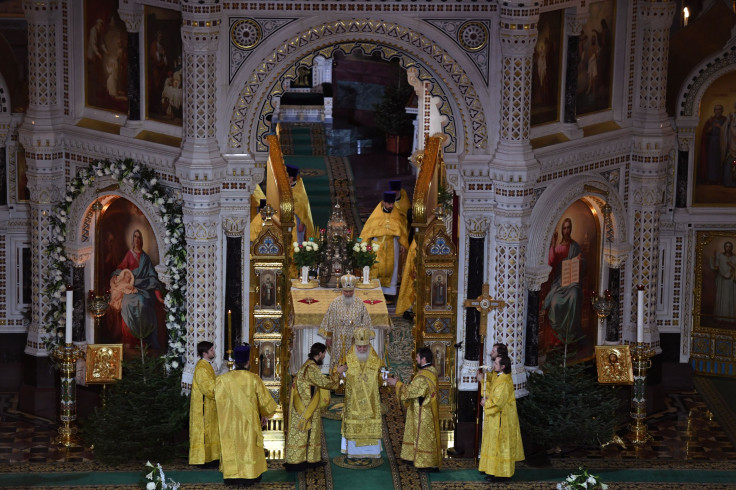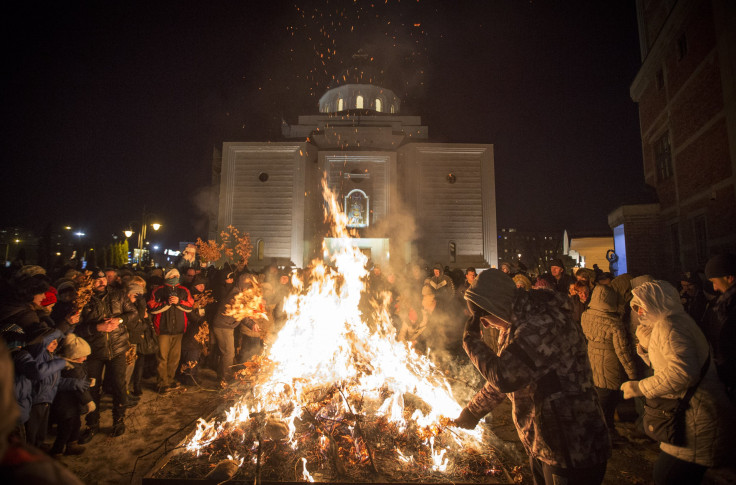Orthodox Christmas 2018: Greek, Russian, And Serbian Church Celebrations

While some parts of the world are done with Christmas celebrations, there are others who are about to begin their celebrations. Many countries celebrate the birth of Jesus in January. The Orthodox Christians celebrate Christmas on Jan. 7. This year the festive celebration falls on a Sunday.

Orthodox Christians follow the Julian calendar that dates back to 46 B.C., while the majority of Christians follow the modern day Gregorian Calendar. Because of this, there is a 13-day gap between Christmas Day and the day Orthodox Christmas is celebrated. In 1923, a revised version of the Julian calendar was introduced to match it with the Gregorian calendar. However, it was only adopted by a few of the Orthodox Christian countries which included Greece, Cyprus, and Romania. The common symbols of Orthodox Christmas are a decorated fir tree, a star, and baby Jesus.

Orthodox Christmas Facts
- People observe a 40-day fast before Christmas.
- The Orthodox tradition uses icons like paintings of saints, to help people to pray. The main image for Christmas features scenes from the birth of Christ.
- The giving of gifts started as a Roman tradition and though it was criticized by church fathers earlier, it has now become a tradition.
- Several feasts are held during Orthodox Christmas celebrations. This includes feasts for Mary, Joseph, the first-born children slain by Herod, and the circumcision of Jesus.
- The holy meal is prepared using specific ingredients. It consists of 12 dishes that include perogies, cabbage rolls, beets, borscht, and potatoes. The 12 dishes represent Jesus' twelve apostles. The holy meal is completely vegetarian.
- The food items may vary in different places and traditional drinks include:
- Kutia which is a pudding traditionally made of wheat and fruit. Poppy seeds and honey are also added to the pudding.
- Another traditional drink is Vzvar which is served before the Christmas dinner. The Russian Vzvar is prepared using dried prunes, dried apples, sugar, and water
- A white tablecloth is spread on the dinner table. The table is set with an extra place for the spirits of family members who have passed away.
- Under the tablecloth, three things that are placed. These include a handful of wheat to signify a rich harvest, garlic to ward off evil spirits, and a bit of sugar that denotes a wish for a sweet life.
- There are several churches including the ones in Russia, Ukraine, Serbia, Georgia, and Macedonia that celebrate Orthodox Christmas on Jan. 7. The Ethiopian and Egyptian Coptic churches also celebrate the same.
- Traditions in different countries may vary but usually, they are pretty similar. Russia is home to 39 percent of all Orthodox Christians in the world. In Serbia, people celebrate Orthodox Christmas looking for an oak tree branch to decorate their home. The branch is later set on fire during dinner and church service. In some countries, sporting tournaments are a part of Orthodox Christmas celebrations.
The other countries that celebrate Christmas in January include Belarus, Montenegro, Ukraine, Serbia, Kazakhstan, Macedonia, Ethiopia, Eritrea, Egypt, Israel, Georgia, Moldova and Bulgaria.
© Copyright IBTimes 2025. All rights reserved.





















